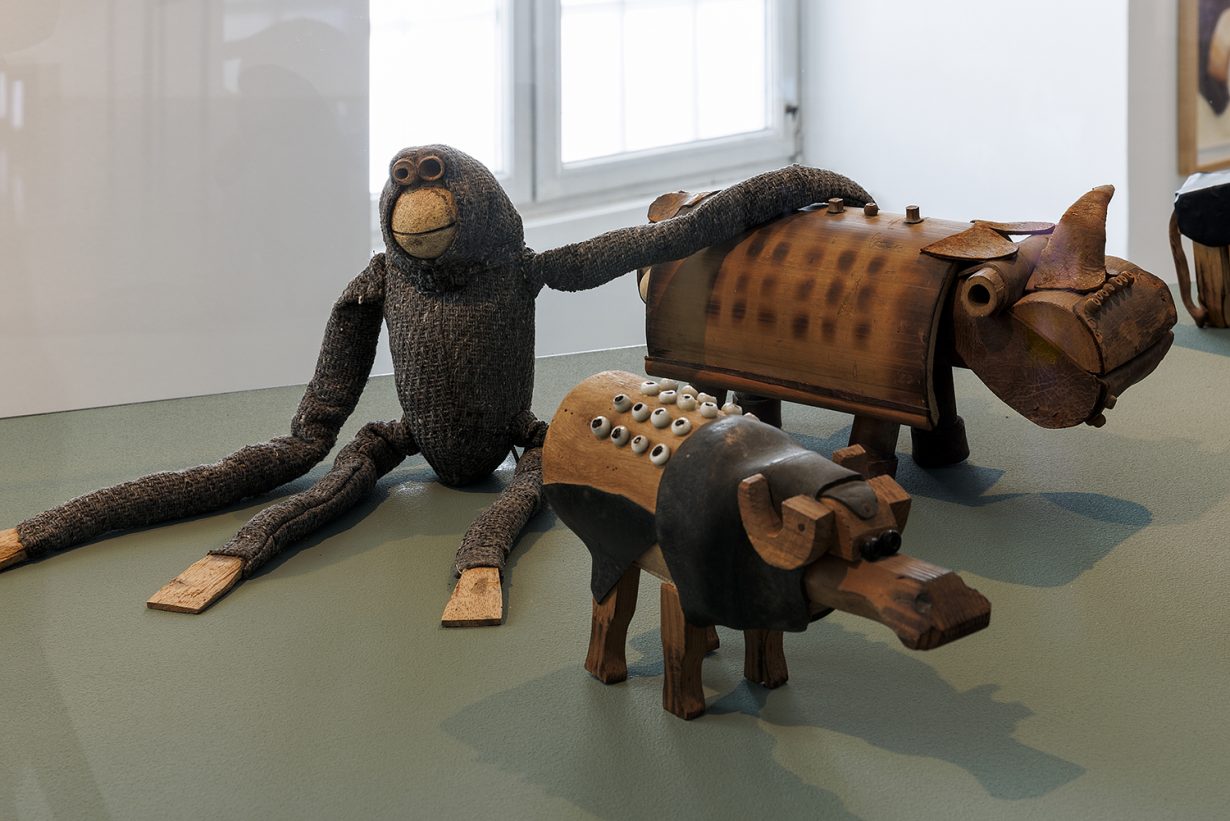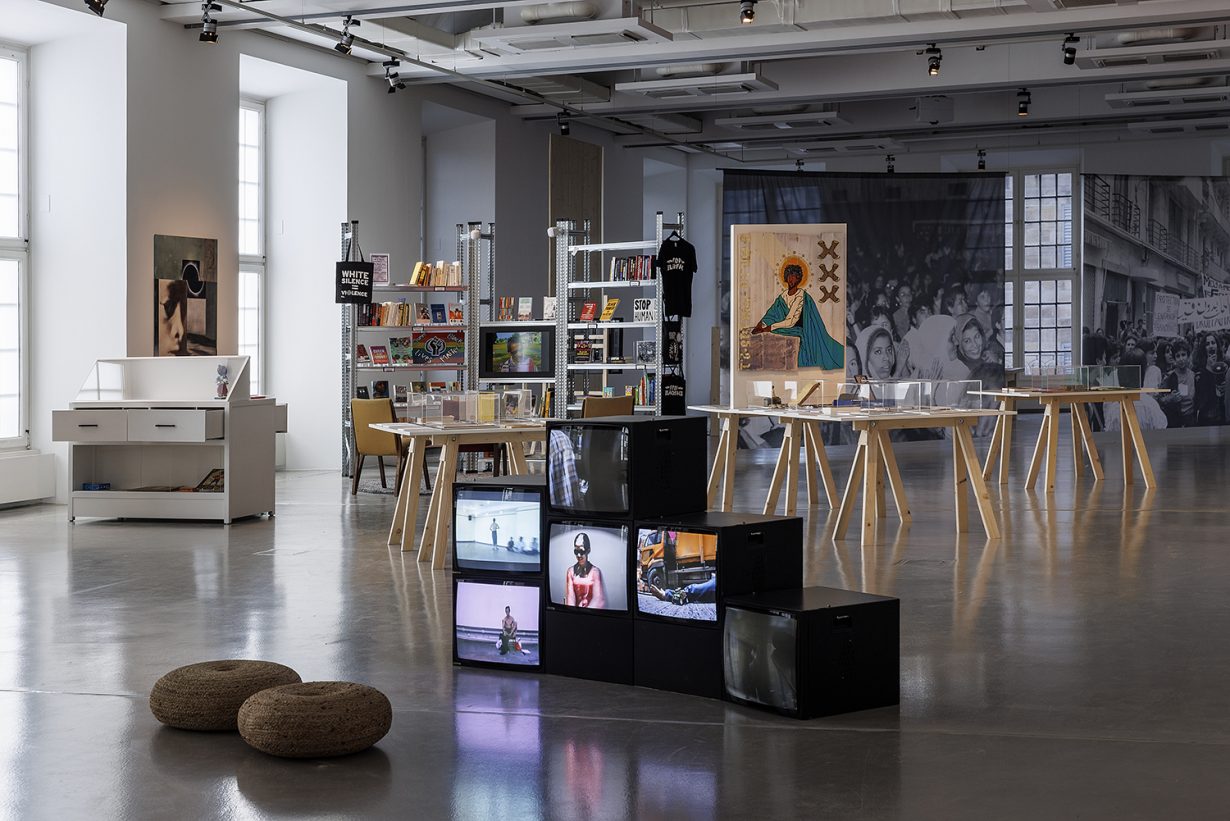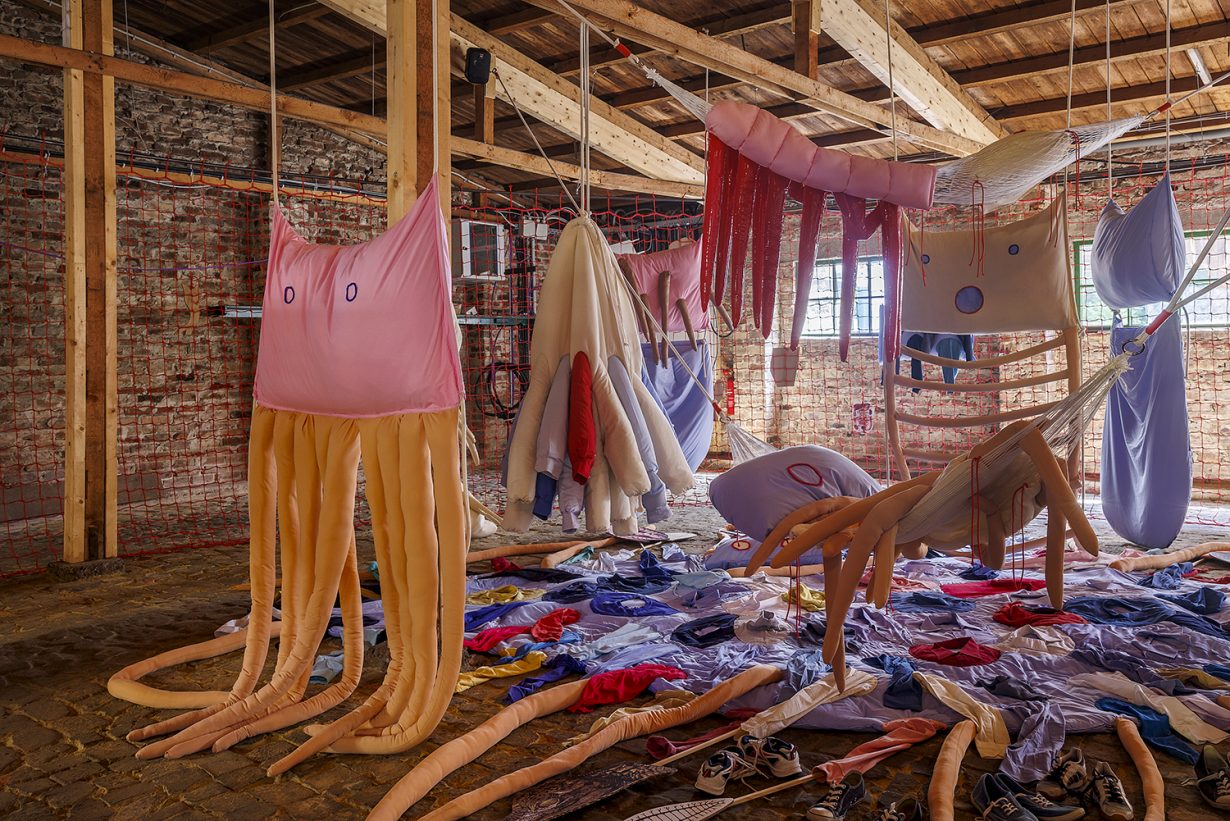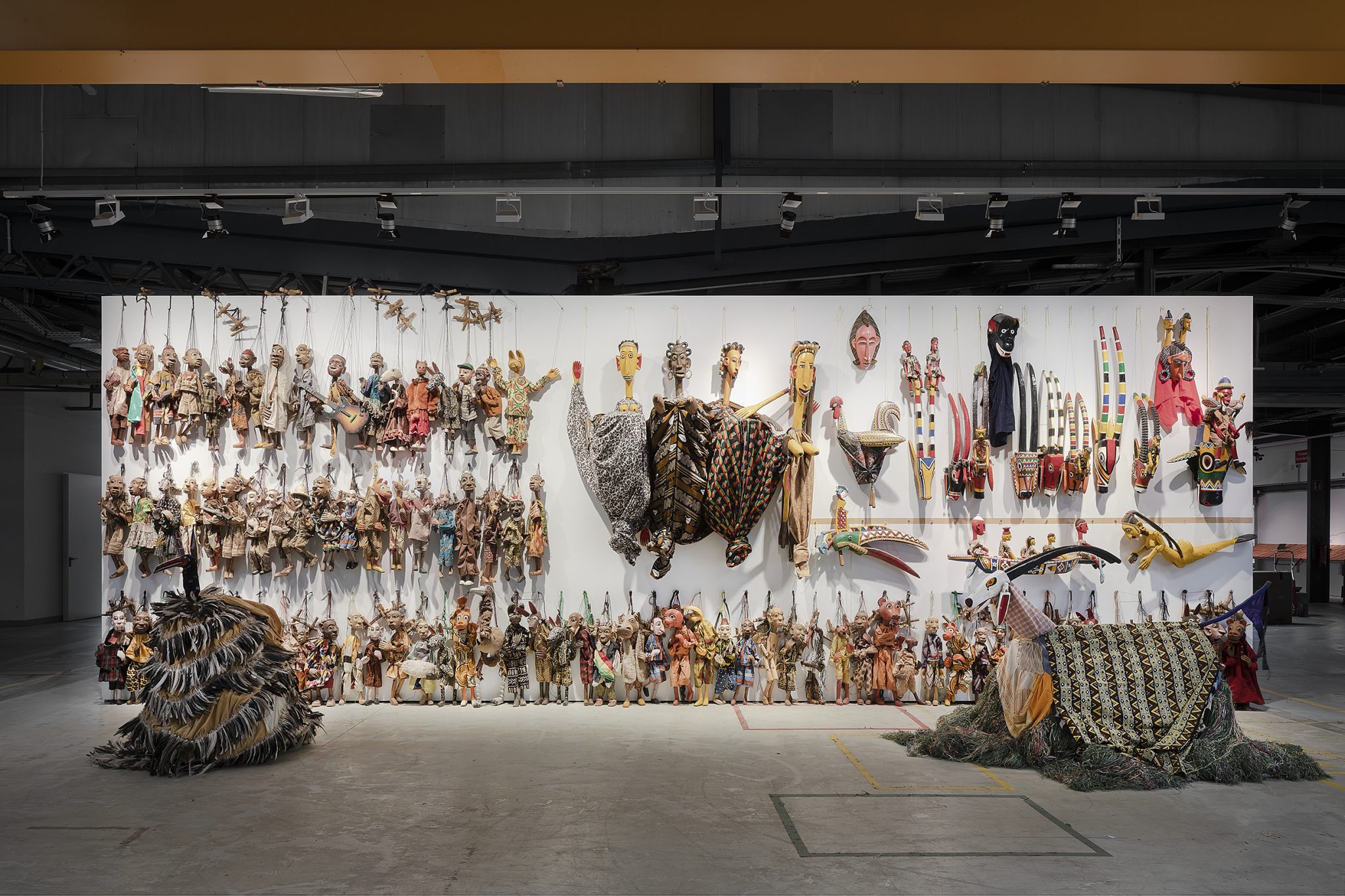Ruangrupa’s rhetoric of collectivity and self-organisation muffles a wider range of motives and interests
Twenty years ago – following the opening of Documenta 11 – artist Carsten Höller and curator Jens Hoffman are supposed to have had a conversation which led to Hoffman coming up with the slogan ‘The next Documenta should be curated by an artist’. It’s taken Documenta, the huge survey show that happens every five years in the German city of Kassel, those two decades to finally get round to hiring an artist, or, as it turned out, a group of artists (and curators) – the Jakarta-based collective ruangrupa – as artistic directors of its 15th edition, which opens this weekend.
Ruangrupa, a group that emerged in the liberalisation of Indonesia following the end of Suharto’s autocratic regime in 1998, is all about more democratic, non-hierarchical approaches to artistic work, focussed on how to develop professional structures and knowledge in a country that has little institutional infrastructure, while implicating art and artists in more socially-engaged ways of working. So the group’s helming of Documenta is a significant upending of the exhibition’s seven-decades-long run of appointing artistic directors who have always been professional curators, and (with the exception of Okwui Enwezor in 2002) all of them Europeans.

That top-down (and in this case Eurocentric) model of single-to-many, with the eminent curator supposed to present an erudite, considered and plugged-in view of the latest developments in contemporary art, has here finally made way for a more diffuse, devolved structure in which ethics matter more than aesthetics. The group has invited 14 collectives and artist groups who have themselves invited other artists, with the whole process driven, over the last two years, by constant dialogue and – if you follow the exhaustive explanations provided by the show’s publicity – countless Zoom meetings and get-togethers, all meant to encourage consensus and collective decision-making. In keeping with ruangrupa’s ethos of lumbung – the Indonesian word for a communal rice barn, a place surplus harvest is stored for the benefit of all – all the participants got an equal share of the production budget, as well a separate reserve which the ‘lumbung members’ could use for collaborative projects.

There are a lot of special terms used for this elaborate working structure, but for all ruangrupa’s emphasis on process and collective decision-making, what kind of exhibition does it, in the end, result in? It’s perhaps a sign of the lumbung model’s success that this Documenta comes across as loose, vibrating with energy, formally rough-and-ready and often more than a little didactic. There is an avalanche of information presented – especially at the huge Fridericianum building, the show’s central venue – about artistic groups and activities and archives which the mostly-Western visitors will have never heard of or encountered elsewhere. (Here are found presentations from Hong Kong’s Asia Art Archive, the Netherlands’ Black Archives, and the Algerian feminist research group Archives des luttes des femmes en Algérie, formed in 2019 to bring together decades of material charting the history of women’s liberation and feminist activism there.)
It’s a vivid incursion of artists from the South and East into an event that has tended to assume the Western artworld represented the whole of the artworld, revealing how starkly different the conditions for art and cultural life are outside the richer art centres of the West. Although ruangrupa can state that their edition is not ‘theme-based’, the thematics one finds are those of artists of societies exposed to conflict and repression; or bearing witness to the raw, unmitigated effects of the globalised economy and those who labour at the bottom of its value-chains; and those dealing with the hard legacies of earlier, even darker times. In Sajjad Abbas’s Water of Life, one of a group of videos made by former members of the Baghdad-based Sada group (2011-15), a young man recounts to camera his narrow escape from suicide bombing of a cafe; he talks, on the verge of hysteria, of finding the flesh of the bomber’s victims on his skin, pointing out blood and hair stuck to his shirt. In the curving modernist space of the Documenta Halle nearby, the group Instituto de Artivismo Hannah Arendt (initiated by artist Tania Bruguera) present a vivid and bitterly humorous installation of works and documents that recounts the history of political repression of artists and intellectuals by the Cuban government.

Art, here, is not the product of the well-oiled and well-resourced institutions and markets that make up the wealthy art centres, but something produced by far more precarious contexts, for reasons that have much more to do with social activism and the self-representation of communities, priorities that diverge radically from the ethos and culture of the stable, enduring culture of the white cube art gallery. At the off-site nightclub building WH22, its spaces given over to galleries, the Palestinian cultural network The Question of Funding co-presents work by the Gazan artist group Eltiqa, whose expressive figurative paintings are shown alongside documentation of the group’s dogged persistence, over three decades, in working as artists amid the grim constraints of life in Gaza under Israeli control. What’s revealing in Eltiqa’s presentation is the necessity of contact with the outside world of more established art centres, and of this outside world as a source of funding for artists. The Question of Funding’s critique recognises that international funding has, since the 1993 Oslo accords, had a determining influence on Palestine’s cultural institutions, but one which always frames the independence of artists within bigger international webs of political influence and dependency.

Ruangrupa’s exhibition is a remarkable dislocation of Documenta’s mystical status in the artworld’s professional curatorial pecking order, while it extends further the practice of distributed curating and organising that has been steadily more evident in previous editions, particularly in Adam Szymczyk’s Europe-spanning 2017 edition. The notion of art as a social document and agent of social justice is given full voice. But The Question of Funding’s presentation comes to mind as one considers the nature of the relationships at stake here. Decentring Documenta to the Global South has the glow of egalitarianism and the righting of historic exclusions, but it also serves, perhaps paradoxically, to evolve and integrate networks of artists and organisations into the wider international circuits of the global artworld (networks get mentioned everywhere in this Documenta). The show’s rhetoric of ‘collectives’ as a catch-all definition tends to muffle the wide range of motives and interests that make artists get themselves together into groups, while also ignoring that no collective is ever truly ‘independent’, and everyone in Documenta is entering into a relationship of exchange with this hugely well-funded and connected institution. Nor are non-Western collectives, supposed to be ‘over there’ doing their thing, entirely disconnected from funding ‘over here’ – as the wall of logos of institutional, NGO and state-cultural sponsors in the foyer of the Fridericianum attests. Ruangrupa has itself in the past received funding from Western civil-society donors such as the Ford Foundation.
These relationships are neither inherently good nor bad, but up for debate – they’re what you negotiate when support is non-existent in your own locality. But they of course reflect the fact that power – soft power, cultural power, of richer countries over poorer ones – is always somewhere in the mix. Artistically, culturally, it’s absolutely a good thing that European audiences will see and hear what other human beings in the rest of the world see and think and feel. There are many moments of insight, beauty and humour to be found here. There are political agendas at work in these too, about the effects of globalisation, about sustainability and the environment and the economy. These aren’t impartial. Faced with scenes of grinding manual and agricultural labour found in a number of video works, or noticing the DIY appropriation of humble materials used by many artists, you might conclude that what the Global South needs is as much economic growth as it can get, for as many of its people as possible. Yet those are political questions, some of which rub up against the priorities of many of the (Western) funders that have a role in supporting some of the initiatives one finds here.

This decentred Documenta, then, stages collective and social engagement and devolved responsibility, as ‘good things’ to support by an institution increasingly preoccupied with its own power and privilege. This probably doesn’t matter to most of the participants, who stand to benefit from the contacts and networks – and money – assembled by this mega-platform. But motifs of collectivity and self-organisation become fetishized – as they are here – if we don’t at least remind ourselves of the unequal balance of power in the vast network of the global artworld, how it intersects with the machinery of geopolitical power, and who, in the end, still holds the purse-strings.
